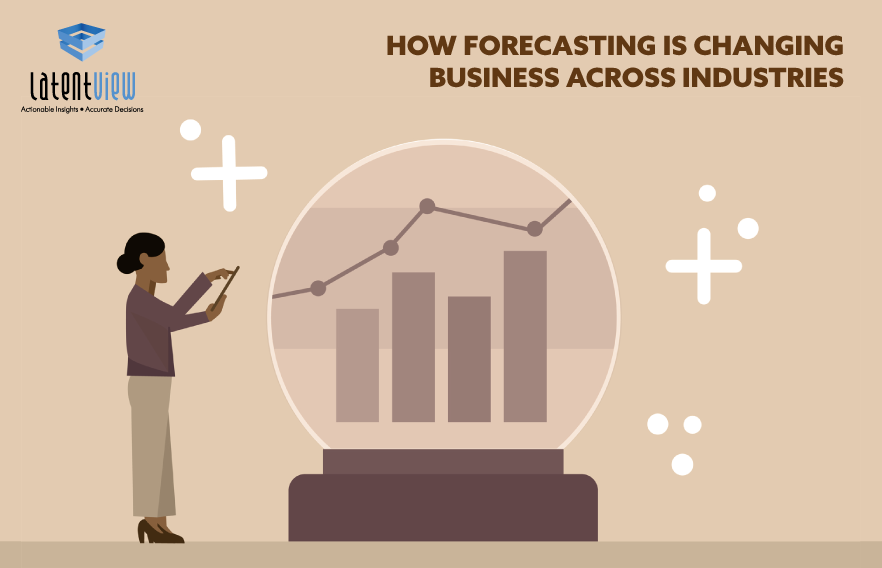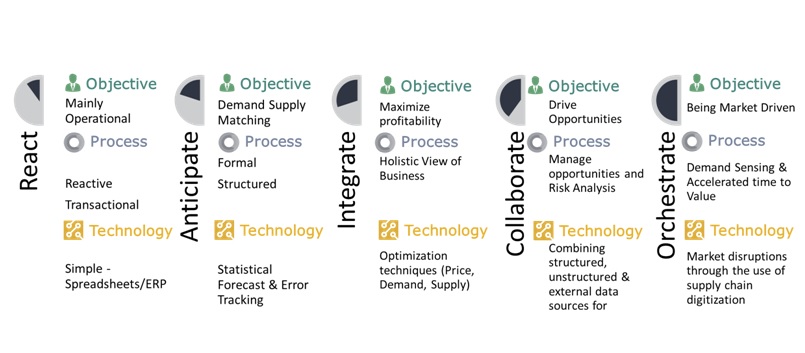Widespread use of forecasting across industries
Forecasting is a process that is ubiquitous across industries, be it Retail, Operations, Marketing, Manufacturing, Logistics or any industry that deals with uncertainties in the global and domestic market.
When it comes to industry based forecasting, the maturity of the models play an important role in the accuracy of the forecast, thus making for improved decision making and planning. This will further help secure increased market share. Listed below is an industry specific approach to forecasting and how it plays a vital role:
Manufacturing Industry: In the manufacturing sector, forecasting is a must so as to ensure the amount of inventory and supplies are present to meet current and future demands. Over-forecasting can lead to losses due to wastage and under-forecasting can lead to the industry coming to a standstill and incurring huge long-term negative effects.
Retail Industry: The retail industry is constantly affected by ever-changing trends; what is profitable today may be what brings a company to its knees in the near future. With new product lines coming in, forecasting is needed to ensure supply meets demand and accommodate for seasonal variations.
Services Industry: When it comes to the services industry, there are multiple variables to be considered such as workforce, workforce efficiency, training requirements, keeping the long-term goals in mind. These could prove to be time-consuming and expensive; therefore, it is imperative to include demand forecasting for the future.
Forecasting Maturity and Applications
Every business has the need to forecast demand. Process maturity is achieved over a period of time through iterations to figure out what best suits the business model.
The forecasting maturity model (An improvisation of Gartner model)
Sales and Operations Planning covers a large part of the demand planning process of which forecasting is just the preliminary step. Once the product demand is identified, there is the supply planning and optimization to ensure appropriate levels of inventory.
Inventory Optimization: Inventory optimization involves balancing your capital investment along with various other constraints so as to minimize costs and other raw materials, at the same time, maximizing profits. At a retailer level, it involves maintaining a large assortment of SKUs while taking demand and supply volatilities into consideration.
Assortment planning: The process whereby products and SKUs are chosen to maximize profits, and at the same time, meet customers’ demands.
Statistical forecasting has become commonplace and is the basic necessity. It, however cannot account for the judgmental view of demand that can only be provided by the business.
A good forecasting process combines the business view with statistical forecasting to arrive at the one-number view which can be used across functions such as marketing, operations, finance and supply chain.
Advancements in the changing landscape
The recent breakthroughs in forecasting algorithms means a chance to move away from the naive and inefficient traditional forecasting to cutting edge forecasting technology, thereby helping organizations tap into the probability of additional revenue.
Challenges in traditional methods
- Lack of stability in volatile market
- Not possible to automate
- Doesn’t fit a one to many framework
- Limited set of variables that don’t take in seasonal trends
The need for Advanced Forecasting
- Statistically predicts monthly or weekly patterns
- Leverages more granular data
- Takes advantage of big data to further increase accuracies. It also helps with:
- Automation
- Customisation
- Reduced risk
- Data backed forecast
- Demand can’t be forecasted at an aggregated level in most scenarios as they may not follow the same trends and seasonal patterns; different product categories need to be treated and modelled separately so as to improve accuracy of the forecast
- With time-to-market reducing and delays causing negative opinions in brand perception, many new products are going from concepts to counter immediately. Forecasting for such new products with no history available requires the involvement of derived models, making use of both qualitative information like characteristics of products and quantitative information like the similarity in demand of existing products
Why do certain business require a tailor-made solution over an existing enterprise solution?
- Keeping in mind every business requirement and the quality of data and information, it is imperative to use correct and different treatments to the data in order to preserve the information, and choose the right set of models that explain the forecast well
- If we continue to use the naive and traditional methods to forecast, there is a limit to what we can achieve in regards to forecast accuracy. Obtaining higher forecast accuracy becomes a challenging part and it involves using external factors and promotional effect to climb up the accuracy ladder
- A solution of this sort takes into account the attributional effect of promotional activities by obtaining the baseline forecast if no promotional activity is carried out, and quantification of total forecast taking into account the magnitude of promotions being carried out
- A tailor-made solution catering to a specific business landscape offers a more robust and stable solution, and is also more responsive to changing business scenarios. This also leads to forecasting with much higher accuracy
Most of the enterprise solutions cater to various industries, overlooking the fact that a “one-size-fits-all” solution might not fit. Just as the way every business and industry is distinct, so should be the solutions.






